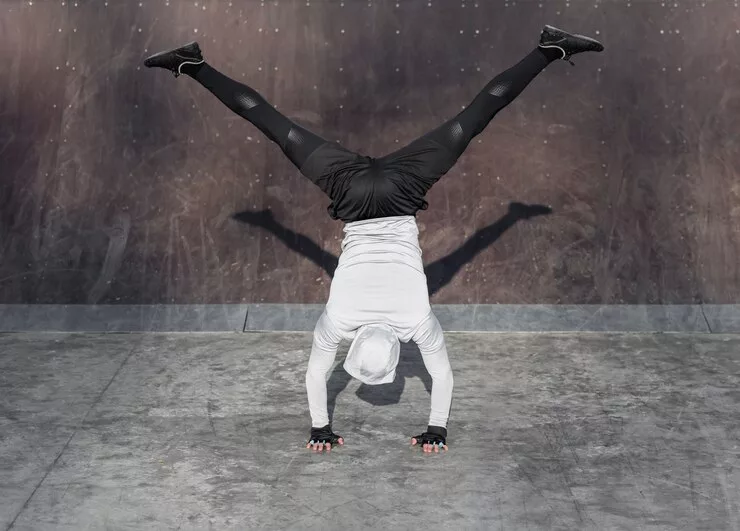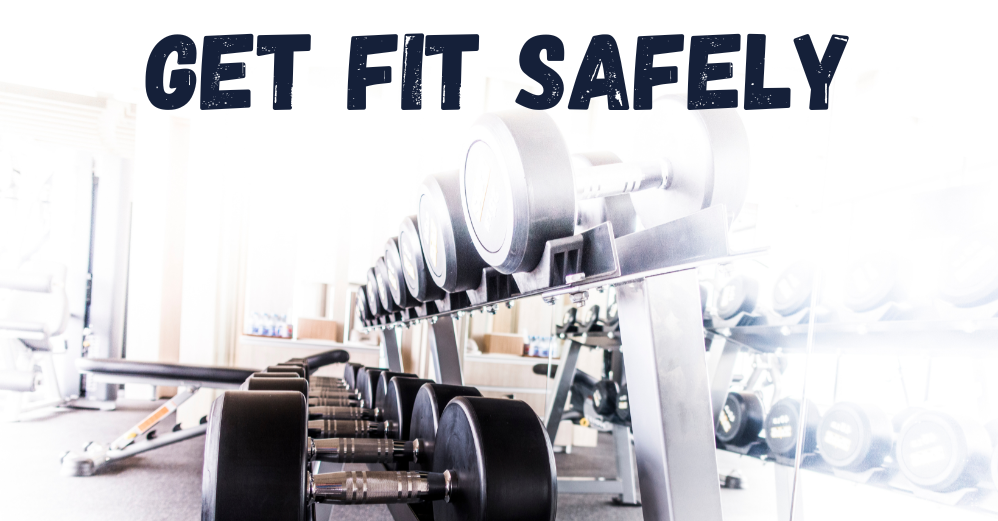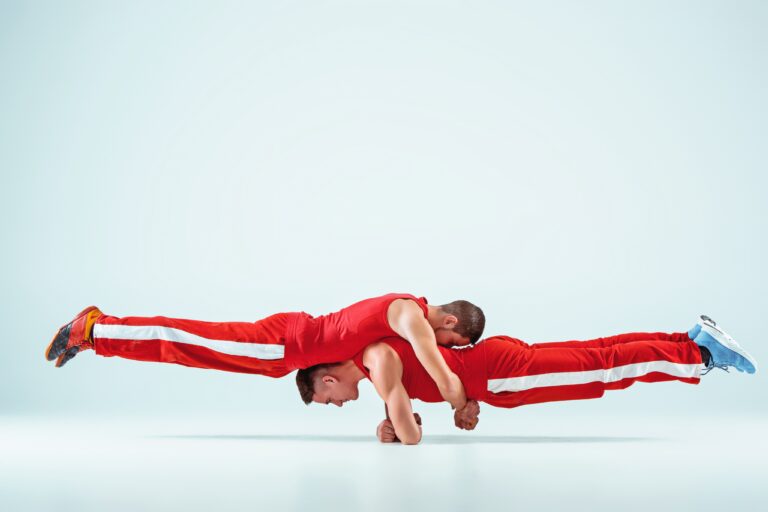Alright, let’s get straight to the point: Yes, being upside down can make you feel like a rag doll.
Nausea, dizziness, that weird feeling that your brain is doing backflips inside your skull… all on the menu, baby.
If you’ve ever thrown yourself into a handstand push-up and suddenly felt like your stomach wanted to escape through your ears, you’re not weird.
You’re human. And honestly, pretty brave.
But let’s take a look at why this happens.
And whether there’s anything you can do to stop feeling like you’re training on the Enterprise during a space storm.
The famous “rush” of blood to the brain

When you go into inversion—meaning your feet go up and your head goes down—something very simple and very intense happens: the blood shifts.
Since gravity doesn’t take a day off, the blood pools in your head.
Eyes, temples, nose, jaw—everything swells up slightly, like someone’s inflating your face with a bike pump.
This can cause:
- A feeling of pressure behind the eyes
- Pulsing in the temples
- Sudden headaches
- That classic “full head” sensation that makes you feel floaty
It’s all normal, at least at first.
But it can become unpleasant if your body isn’t used to handling it yet.
The vestibular system: when balance goes haywire

Inside your ears are tiny organs called semicircular canals, filled with fluid and sensitive cells.
They’re your internal compass, your built-in level.
When you flip upside down suddenly, that fluid sloshes around chaotically.
And your brain, poor thing, gets flooded with mixed signals.
“Are we falling?”
“No, wait, we’re standing still?”
“Why is the ceiling under our feet?”
This sensory overload can cause:
- Light dizziness
- Disorientation
- A vague sense of unease that creeps up like car sickness
The funny part is, you didn’t do anything wrong.
It’s just your brain temporarily losing GPS signal.
Not the best time to solve equations
There’s also a myth we should bust: “When the blood flows to your brain, you think better.”
Uhm… kinda.
In theory, more blood flow means more oxygen.
But in practice, the brain doesn’t love sudden shifts.
Excessive flow can cause confusion, light-headedness, and that cotton-stuffed-head sensation.
Not to mention the fact that breathing properly in that position is harder.
Your diaphragm has to work against gravity.
Your internal organs push against your lungs.
And you might be holding your breath without realizing it, muscles tense, heart racing.
Result?
You’ve mixed the perfect cocktail to throw your nervous system into chaos.
When does it happen more often?
Not everyone reacts the same.
Some feel like superheroes after ten seconds.
Others feel like they’ve just spun on a carnival ride after three breaths.
Most common situations where you might feel dizzy:
- You’re a beginner with inversions
- You have sinus issues or blood pressure problems
- You’ve eaten too much (or too little)
- You had an extra coffee and your heart’s racing
- You didn’t sleep well or you’re dehydrated
- You’re sensitive to motion (car/plane sickness)
For example, when I started doing handstands, I felt nauseous every single time.
Then I realized that working out on an empty stomach with music blasting maybe wasn’t the best idea.
Is it dangerous?
In most cases, no.
It’s just uncomfortable.
Your body is trying to adapt.
It only becomes a problem if you ignore warning signs, like:
- Dizziness even after you’re upright again
- Blurry vision or feeling like you might faint
- Long-lasting headaches or nausea that won’t go away
In those cases, stop.
Drink something.
Breathe.
And for once, listen to your body.
What does science actually say about feeling dizzy upside down?

If you’re wondering whether this “inversion discomfort” is all in your head or if something’s really off in your body… well, science says you’re not imagining it.
A study published in Clinical Methods confirms that what we call “dizziness” can have many causes, and it’s not always easy to tell them apart without digging into the context.
For example:
- Positional vertigo (like what you might feel during or right after a handstand) is linked to abnormal stimulation of the vestibular system, especially when the head changes direction relative to gravity.
- True imbalance happens when the brain struggles to integrate visual, auditory, and proprioceptive signals—something that’s very likely during upside-down exercises if you’re not trained or have neck tension.
- Lightheadedness, that vague feeling of floating, is often tied to hyperventilation—very common in high-intensity workouts, especially if you hold your breath while pushing.
One of the most interesting findings is that many people can’t clearly describe the feeling, but they react very specifically during simulation tests.
For instance, during guided hyperventilation (fast breathing while lying down), subjects with chronic dizziness often recreated exactly “that weird feeling” they also get during handstands.
This suggests that sometimes it’s not just the physical position, but also breathing and the nervous system’s response that trigger the symptoms.
In short: 🧠 It’s not just your head flipping.
Your entire brain-body system needs to learn how to adjust.
That’s why gradual exposure, breath control, and monitoring body signals are key.
Science basically confirms something simple: if you get dizzy upside down, it’s normal.
But you can train through it.
For the clinical deep-dive: 🔬 Clinical Methods – Chapter 212: Dizziness (NCBI)
What can you do to stop feeling like a spinning astronaut?
The good news is: you can get used to it.
Here’s what helped me over time (and might help you too):
- Start from zero, no rush: Begin with wall holds, then negatives, then pike push-ups, and only after that move to full handstands
- Control your breathing: Never hold your breath! Inhale through the nose, exhale slowly through the mouth
- Don’t stay upside down too long at first: 5–10 seconds is plenty. Then rest. Then try again
- Drink beforehand, not after: A dehydrated body is more prone to fatigue and fainting
- Avoid inversions on an empty stomach or right after eating a big meal
- If you have chronic dizziness or blood pressure issues, ask a doctor before defying gravity
And here’s a friendly tip: use a mirror or record yourself.
Seeing if you’re tense, stiff, or bent out of shape helps you fix things without just guessing.
The benefits, despite everything
The amazing thing is, once you get past the nausea and the initial discomfort… handstand push-ups become one of the most complete bodyweight exercises out there.
They give you:
- Shoulder and core strength
- Joint stability
- Ninja-level motor control
- Self-confidence that follows you outside the gym
And you know what the secret is?
Progression.
Every time you hold it one second longer, breathe better, or fall on your face a little less… you’re moving forward.
One centimeter at a time.
Even if at first you feel like you just got off the Tilt-A-Whirl.
RELATED:》》》 How Much Time Do Beginners Need to Achieve a Handstand?
Conclusion
So in short?
Yes, it’s normal to feel off at first.
No, it doesn’t mean you’re doing it all wrong.
And yes, you can improve if you listen to your body and take it one step at a time.
Being upside down is kind of like changing your life perspective: it throws you off, challenges you… but then opens up a whole new world.
And when you finally nail those handstand push-ups without nausea, fear, or flailing… you realize it’s not just physical strength.
It’s a mental win.





